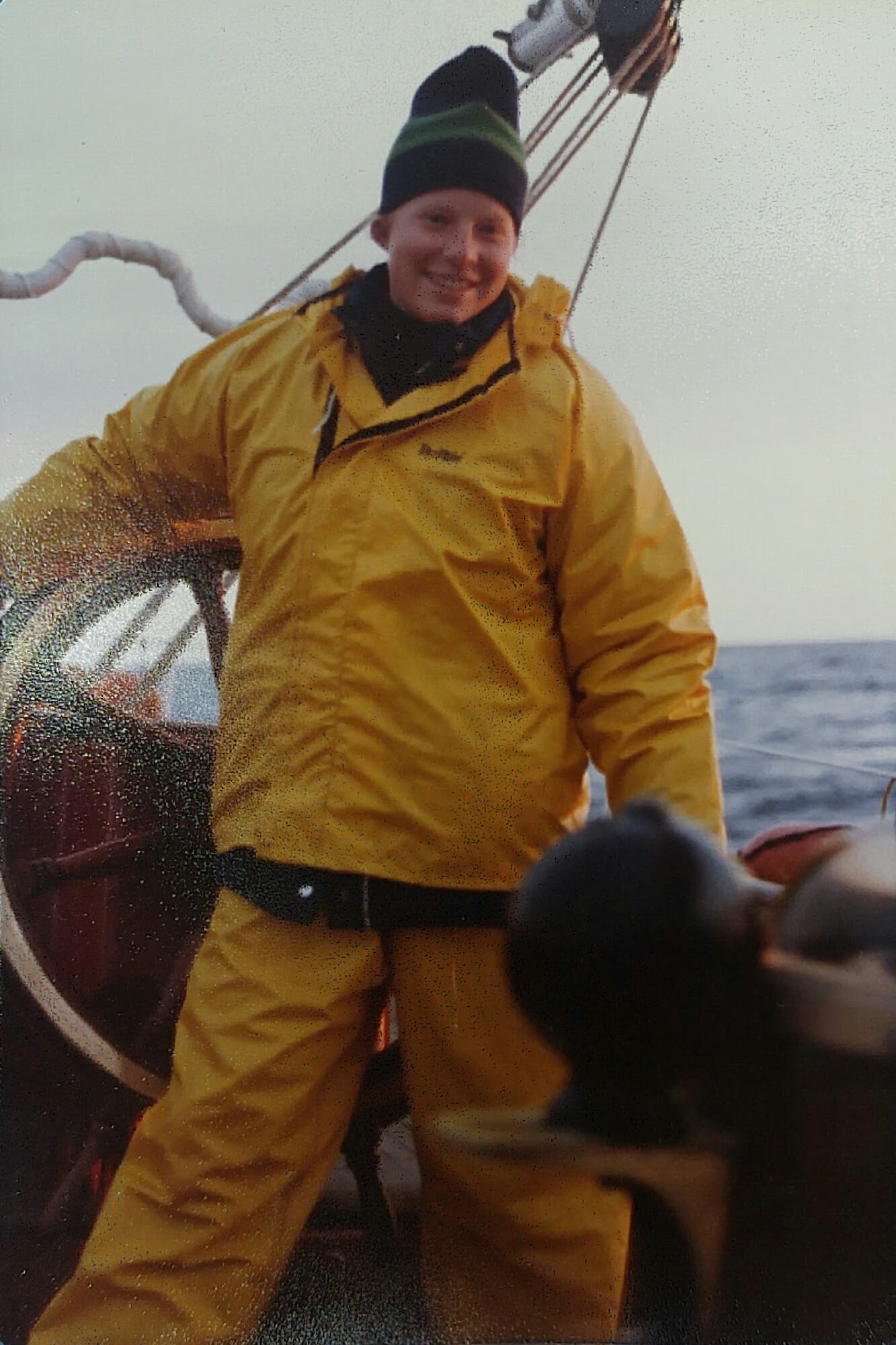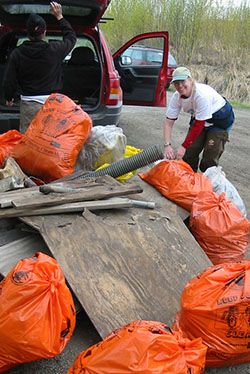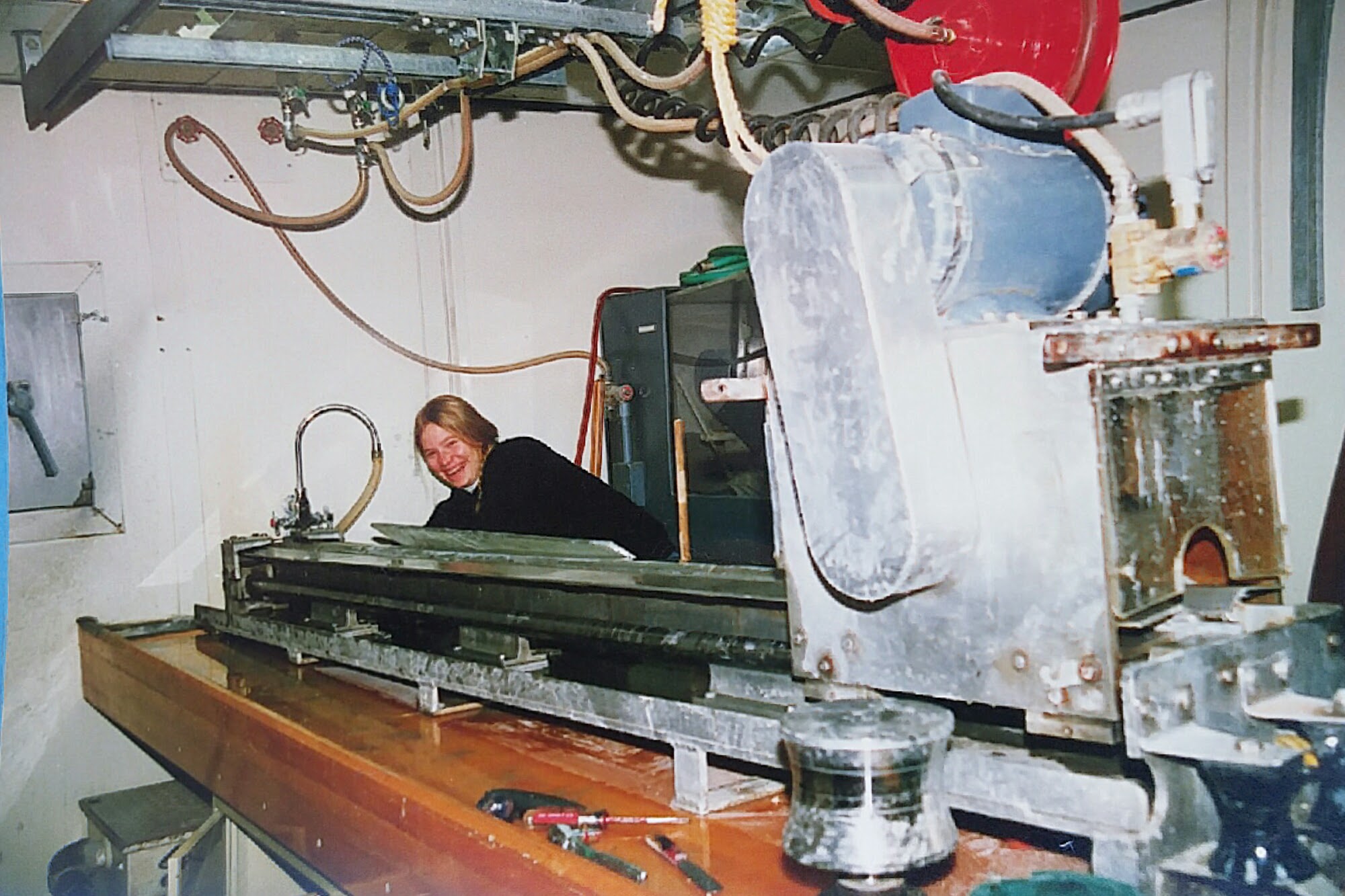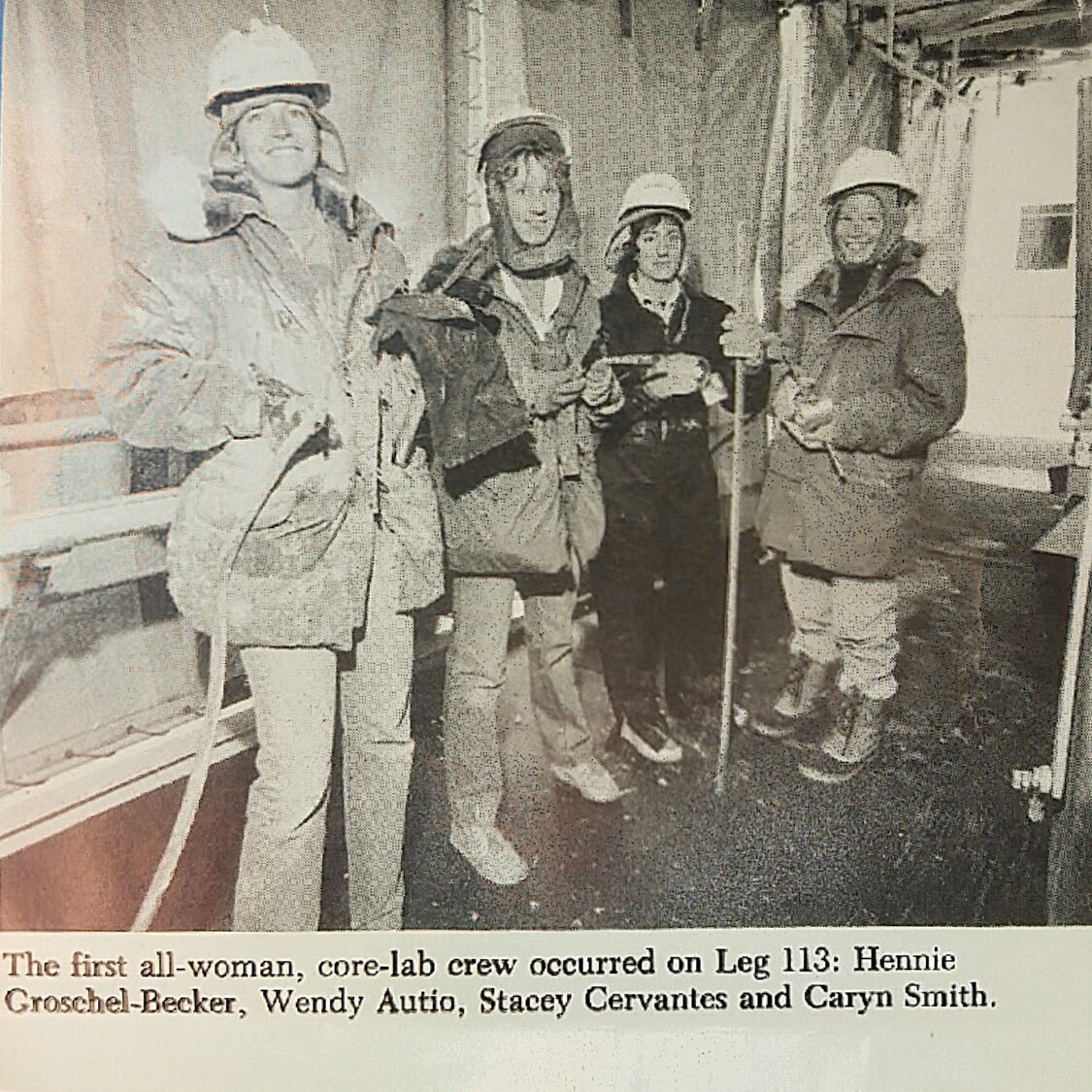For oceanographer Caryn Smith, it’s all about pollution prevention. It keeps this scientist in the Bureau of Ocean Energy Management (BOEM) Alaska regional office motivated to continue her important work.
“My biggest passion about ocean science is sharing with others that every drop that reaches the ocean matters,” said Smith. “Pollution prevention is key. We want to keep pollutants and trash out of the ocean if we can.”
The Chicago native has worked on many cleanup projects in Alaska as a volunteer team leader. Pulling thousands of pounds of trash from creeks and streams in Anchorage over the course of 24 years has been a source of satisfaction for Smith, doing her part to clean up watersheds that feed into Cook Inlet.
Smith joined the former Minerals Management Service (MMS) in February 1989. A little more than a month later the Exxon Valdez spilled 11 million gallons of crude oil into Prince William Sound. MMS volunteered their staff for several U.S. Department of Interior functions and Smith participated on the Department’s Resource Assessment Team. It was her first exposure to marine oil spills and a provided a valuable lesson on the impacts caused by oil spills and the long process of spill response and cleanup.
 A love of being outdoors and curiosity about the natural world around set her on a career path in ocean science. In the summer of 1982 she completed a SEA Semester in Woods Hole, Massachusetts and the North Atlantic, sailing on the 125-foot schooner the R/V Westward. She completed her undergraduate work at the University of Colorado Boulder and received a bachelor of arts in Geology in August 1983. In late 1988 she graduated with a master of science in Oceanography from Texas A&M University in College Station, Texas.
A love of being outdoors and curiosity about the natural world around set her on a career path in ocean science. In the summer of 1982 she completed a SEA Semester in Woods Hole, Massachusetts and the North Atlantic, sailing on the 125-foot schooner the R/V Westward. She completed her undergraduate work at the University of Colorado Boulder and received a bachelor of arts in Geology in August 1983. In late 1988 she graduated with a master of science in Oceanography from Texas A&M University in College Station, Texas.
Her first science position was as a professional research assistant at the Cooperative Institute for Research in Environmental Science (CIRES), University of Colorado/NOAA in Boulder, Colorado. Launched in 1978, Seasat was the first Earth-orbiting satellite specifically designed and tasked for the remote sensing of Earth’s oceans. Originally the information from Seasat was output as long strips of optical film which had to be spliced together.
Smith spent her early days as a researcher searching for internal wave images all over the globe and conducted oceanic internal wave research using satellite images from both Seasat Synthetic Aperture Radar and Landsat Multispectral Scanner images. She observed and analyzed internal wave structure and integrated it with available shipboard oceanographic data. During that time, Dr. Clifford L. Rufenach at the NOAA Environmental Research Lab became Smith’s mentor.
 Before joining MMS, Smith worked as a geologic technician with the Research Planning Institute in Boulder, where she helped complete stratigraphic and hydrodynamic studies to evaluate oil and gas exploration and development. She says this career stop helped her become knowledgeable about the oil and gas industry.
Before joining MMS, Smith worked as a geologic technician with the Research Planning Institute in Boulder, where she helped complete stratigraphic and hydrodynamic studies to evaluate oil and gas exploration and development. She says this career stop helped her become knowledgeable about the oil and gas industry.

Prior to working with MMS and later BOEM, she had also worked as a graduate research assistant for the Ocean Drilling Program in College Station, Texas. She worked with a team of 50 international scientists in the Weddell Sea, near Antarctica, to study the paleoceanography of the basin using a variety of laboratory techniques. Smith said this experience taught her about working in remote polar environments.
One of Smith’s biggest accomplishments has been training all BOEM Alaska OCS Region staff to do oil-spill risk analysis (OSRA), as well as the development of OSRA information and tools to educate new staff.
“Oil spills are a primary concern to BOEM scientists and stakeholders,” she said. “Working as a team is essential to the development of a National Environmental Policy Act analysis.”
She notes that an integrated team of scientists must function together to consider impacts and how they interact among social, environmental and biological resources. Using the best available science to develop information about oil spills and their potential impacts is an important part of BOEM’s mission. Smith said a challenge over the years has been learning how to explain complex technical information so that everyone can understand the information.
 “If you can’t convey the science you are doing, especially to BOEM’s stakeholders, then it is difficult -- if not impossible -- to make any forward progress,” she said.
“If you can’t convey the science you are doing, especially to BOEM’s stakeholders, then it is difficult -- if not impossible -- to make any forward progress,” she said.
Asked if she has advice for aspiring ocean scientists, Smith said students should study a subject that they are passionate about.
“Stay curious and take pride in doing your work above and beyond what’s expected,” she said. “There will be times in your career where the work is mundane and boring. However, if you are passionate about what you do then that passion will sustain you to power through to the end result as well as inspire you to do your work well.”

